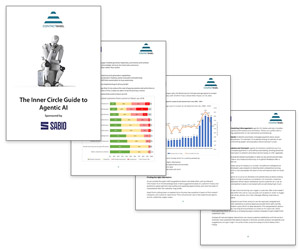Seven key trends that will set the agenda for workforce optimisation (WFO) development
Key issues driving next generation workforce optimisation
“Many businesses have already seen very positive results from the implementation of individual WFO components such as workforce management, quality monitoring and recording, however, we’re now seeing a significant expansion of the workforce optimisation footprint, with the addition of new tools and processes that we believe can help businesses unlock even further benefits from their WFO investment,” commented Sabio Director, Adam Faulkner.
Workforce optimisation is the convergence of seven key contact centre functions that work together to support continually improving customer service performance. Each function combines people, processes and technology to deploy the best resources for meeting customer demands and increasing customer value.
Sabio’s seven key next generation WFO drivers are:
- Real-time Customer Feedback – many organisations monitor their calls, but only from an internal quality perspective, which means they have no real way of capturing what their customers actually feel about their interactions.
New Customer Feedback solutions help to capture the voice of the customer, and use automated survey techniques to deliver immediate feedback, and will allow organisations to remove the guesswork around key business concerns such as a customer’s ‘propensity to churn’
- Cost-effective Speech Analytics – while audio mining technology has been around for a while, it’s always been too expensive for the majority of contact centre operators.
Now with the introduction of the latest phonetic-based solutions we’re expecting far more interest in this technology, particularly as the best solutions can deliver 20 times as much audio for around half the price of previous approaches
- Focus on Quality – evolving to provide recordings and evaluations of the complete customer experience across multimedia touch points.
Latest quality monitoring techniques enable the automated capture of agent voice/screen data, allowing supervisors to spend more time productively coaching and supporting their agents
- Managing performance against corporate objectives – Balanced Scorecards are now acknowledged as one of the most successful business performance tools, and scorecards that analyse and help identify staff strengths and areas for improvement will have an important role to play in measuring KPI-driven performance in the contact centre against broader corporate business objectives
- Enhanced WFM functionality – in addition to core planning and resourcing tasks, organisations are increasingly looking to workforce management solutions to support their growing requirement to blend inbound and outbound calls and the resources needed to support them.
WFM resourcing and scheduling tools will also adapt to support home-workers and back-office staff in other areas of the business
- Recording all customer interactions – in today’s ever-changing environment of regulation, risk management, global competition and increasing customer demands, the need to capture and manage interactions with customers has never been greater.
The latest WFO recording and IP techniques enable the capturing, tagging, storing and retrieving of multi-channel contacts with customers
- Supporting agents through eCoaching – a vital technology to enable the rapid delivery of best practice techniques to support staff development.
Fully integrated eLearning solutions now support rapid content creation and the managed delivery of training course material based on identified agent requirements
New Customer Feedback solutions help to capture the voice of the customer, and use automated survey techniques to deliver immediate feedback, and will allow organisations to remove the guesswork around key business concerns such as a customer’s ‘propensity to churn’
Now with the introduction of the latest phonetic-based solutions we’re expecting far more interest in this technology, particularly as the best solutions can deliver 20 times as much audio for around half the price of previous approaches
Latest quality monitoring techniques enable the automated capture of agent voice/screen data, allowing supervisors to spend more time productively coaching and supporting their agents
WFM resourcing and scheduling tools will also adapt to support home-workers and back-office staff in other areas of the business
The latest WFO recording and IP techniques enable the capturing, tagging, storing and retrieving of multi-channel contacts with customers
Fully integrated eLearning solutions now support rapid content creation and the managed delivery of training course material based on identified agent requirements
“There’s no such thing as a standard WFO implementation – for some, a WFO programme is about putting a workforce management solution in place, for others the focus might be on recording, performance monitoring or e-learning. Whatever an organisation’s focus, there’s a wide range of tools and processes that can be deployed to support workforce optimisation,” added Adam Faulkner.
For more advice on improving your schedules, read this article on Workforce Optimisation: 10 Ways to Improve Your Contact Centre Schedules.
Contributors
- Adam Faulkner of Sabio
Author: Jonty Pearce
Published On: 17th Mar 2010 - Last modified: 13th Aug 2025
Read more about - Workforce Planning, Sabio, Workforce Management (WFM), Workforce Planning



















